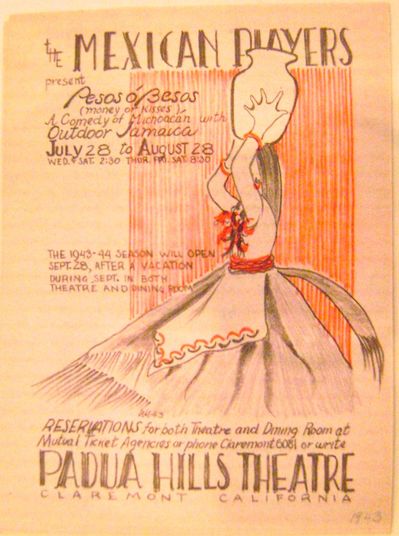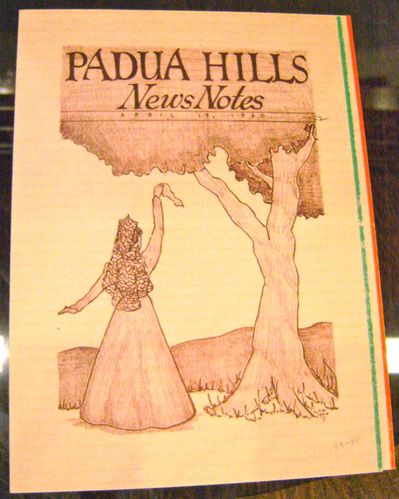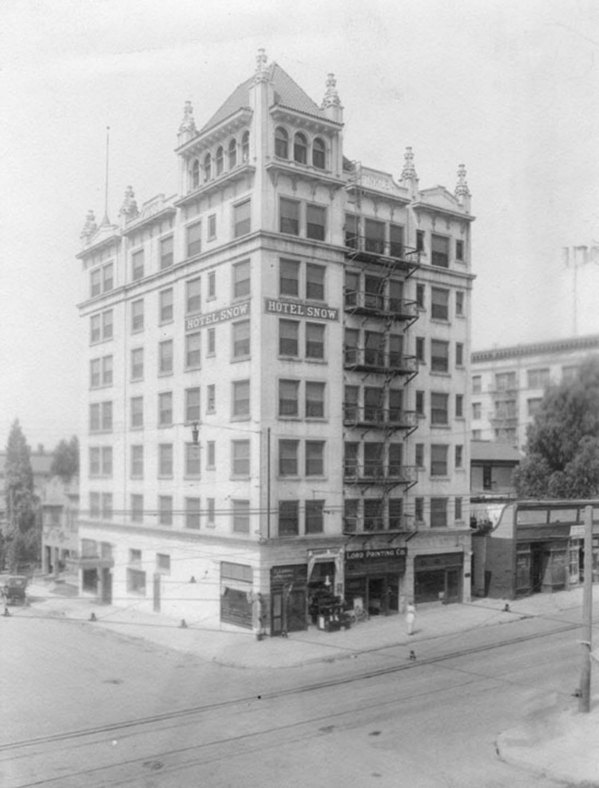Hello again! This week, I delved into the details of Fred C. Finkle’s professional life to create a new biography for the finding aid, researched place names to identify untitled maps and blueprints, and cracked open the box containing my next project – playbills and newsletters for the Padua Hills Theatre, featuring productions by the Mexican Players. Reading the CCEPS processing manual and description templates got me thinking and plotting my strategy for organizing these collections – I foresee some challenges, but
First, thanks to Special Collections Librarian emerita Jean Beckner for locating several folders with Finkle-related clippings and notes. One particularly delightful factoid I was pleased to learn is that Fred Finkle built a Finkle Building in downtown Los Angeles to house his offices, and which was also home to the Hotel Snow (see photo). He also built several apartment buildings, including the Finkle Arms at 9th and Figueroa and Finkle Manor. What wonderful names!
Finkle’s reputation as an expert engineer and geologist is reflected in these stacks of disorganized blueprints; while working mainly for Edison Electric Co., Finkle designed and built seven hydroelectric projects while consulting for companies in Colorado, Oregon, and Washington, as well as other companies in Central and Southern California. The dates on the blueprints for these projects often overlap or run closely together, evidence his skills were widely respected and in high demand.
Finkle started his own consulting firm in 1911 in Los Angeles, which he continued until his death in 1949, and served as an expert witness in many trials litigating water rights and supply issues. He was also an outspoken opponent of several high profile water projects he determined to be defective or impracticable, including the poorly designed and constructed St. Francis Dam (a Mulholland venture) which Finkle condemned four years before its catastrophic failure resulting in the loss of 631 lives and $20 million in property.
The folders also revealed several past inventories of Finkle’s maps and blueprints; there is one typewritten copy, a handwritten copy on yellow legal paper, and a printed copy that looks like it was made on a computer from the 1980s or early 1990s. It seems plenty of people looked at the papers, but they still were put back into the same folders in no particular order each time. I am sure organizing the papers seemed so daunting a task that it was easier to just put them away again, even if disorganized. I cannot really blame them!
I mentioned my next project – a small collection of playbills, fliers, and newsletters for the Mexican Players at the Padua Hills Theatre. Next week I hope to get closer to devising a schema to arrange and describe the material with the CCEPS description template. I also checked out a 1961 book called Mexican Serenade: the Story of the Mexican Players and Padua Hills Theatre, written by Pauline B. Deuel and published by the Padua Institute.
Below is a playbill from 1943 and a newsletter from 1940 – the hand drawn images and lettering are very charming. I also include a photo of Fred C. Finkle’s Finkle Building – one of several structures bearing his name that have sadly been demolished – it seems the apartment buildings are gone, too. (Photo LAPL)





